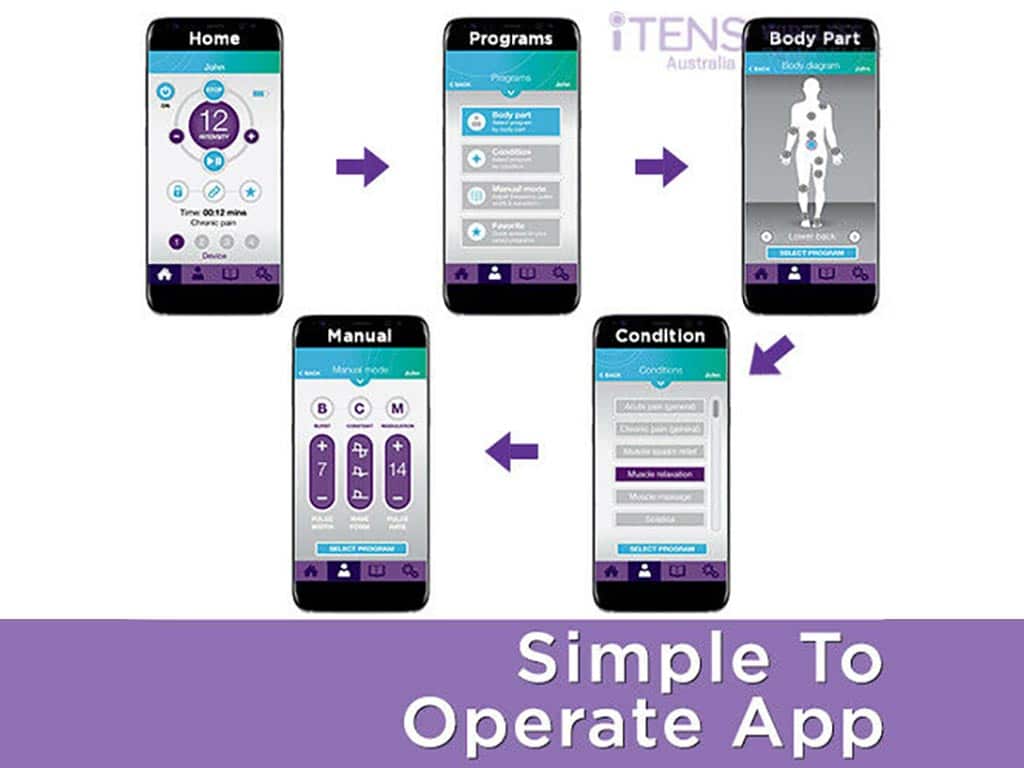
Transcutaneous Electrical Nerve Stimulation (TENS) is a therapy that uses mild electrical currents to relieve body pains. The effectivity of the treatment depends on the delivery of these currents, particularly the pulse rates in Hertz, pulse widths, and intensity. TENS Hz is the number of pulses per second. Generally, individuals may adjust the frequency to high and low levels to activate the pain-gating mechanism or release endorphins. The right setting can alleviate pain symptoms more effectively.
TENS therapy has been used for decades to manage various types of pain. It offers a safe, drug-free, and non-invasive form of pain relief. This approach is ideal for people seeking an alternative to medications. It also minimises the need for surgery or invasive procedures. However, determining the right settings is vital towards optimal results. In this article, we will delve into the role of TENS frequency, adjusting the unit, and applications of each setting.
What is TENS Hz?
TENS Hz, or frequencies, refers to the number of electrical pulses delivered by a TENS device to the nerves. Different frequencies can have varying effects on the body. Additionally, the TENS machines have various stimulation modes targeting different types of pain. The standard modes are burst, constant, and modulation. In burst mode, the device delivers short, intermittent pulses, ideal for acute pain caused by musculoskeletal conditions.
Constant mode delivers a continuous flow of electrical current. It typically uses low frequencies (1-4 Hz) to help reduce chronic pain. The treatment time of this stimulation is usually 30 minutes or less. Moreover, it works best when the pads are placed on acupuncture points.
Lastly, the modulation mode uses rapidly changing frequencies and pulse widths. It uses cyclical currents to reduce nerve adaptation over time. The frequency varies between 2-150 Hz to relieve moderate to severe pain. The amount of time spent in each modulation pattern varies depending on the severity of the pain.
Mechanisms of Action
- Activation of neural gates: The electrical stimulation overrides the nerve fibres in the spinal cord that are responsible for allowing the transmission of pain signals. Closing the pain gate mechanism blocks pain signals from reaching the brain.
- Production of endogenous opioids: Low-level stimulation triggers the release of natural painkillers like endorphins. They bind to opioid receptors and prevent pain messages from being sent to the brain.
- Increasing blood flow: Electrical pulses can help increase blood circulation to the affected area, which can promote healing and reduce inflammation
- Nerve inhibition: The electrical currents can directly inhibit an abnormally excited nerve from sending pain messages.

Frequency Settings for TENS Hz
The frequency setting for TENS Hz is easy to adjust on TENS devices. When using a TENS device, individuals can select between low and high frequencies. Low-frequency stimulation (1-10 Hz) is ideal for chronic pain, as it stimulates the release of endorphins. Lower frequencies are also effective in reducing muscle spasms and inflammation.
On the other hand, a high-frequency setting (50-150 Hz) is suitable for acute pain, as it activates the pain gate mechanism. Higher frequencies help to block pain signals from reaching the brain, providing temporary relief. Furthermore, frequency settings higher than 150 Hz cause muscle contractions of the muscles. It may not be as effective and can cause discomfort or muscle fatigue.
It is important to note that individual responses to TENS therapy can vary. Thus, it is advisable to try different frequency settings or stimulation levels to find the most effective relief. It is also recommended to consult with a healthcare professional before using a TENS device. They can also help identify the baseline pain score and run comparison tests to see the changes in pain intensity ratings after the treatment.
How to Select the Best Settings?
Selecting the best settings on a TENS device depends on various factors. Firstly, considering the type of pain is essential. For example, a higher frequency may be more effective for acute pain, like sports injuries or muscle strain. Secondly, adjust the device based on the level of pain. Users can modify the intensity level to suit mild to severe pain.
Thirdly, choose the setting based on the pain location. Smaller regions may require lower electric stimulation levels. Thus, the placement of the electrode pads also plays a crucial role in maximising the effectiveness of TENS therapy.

Applications of TENS Hz Therapy
The applications of TENS Hz therapy vary according to the level of stimulation and type of pain. Low-frequency TENS is useful for chronic pain situations. This includes pelvic pain, diabetic neuropathy, sciatica, arthritis, fibromyalgia, and spinal painful conditions. Individuals can use the TENS machine as often as necessary without risk of adverse events.
On the other hand, high-frequency TENS is effective in providing temporary relief for acute injuries, postoperative pain, primary dysmenorrhoea, and labour pain. Additionally, TENS therapy is valuable in accelerating the recovery of injured muscles or tissues. It can help reduce inflammation and increase the range of motion. As a result, it helps improve the overall muscle function.
In general, TENS therapy provides comprehensive pain management. It is valuable in physical therapy and rehabilitation centres for people with chronic conditions or recovering from musculoskeletal pain or injury. This also minimises reliance on analgesic consumption and the need for surgical intervention. Overall, the adjustable pulse rates and intensity levels make TENS a versatile tool for acute and chronic pain relief.
Is It Safe and Effective?
TENS therapy is generally safe and effective when administered properly. However, as with any medical treatment, it is vital to follow the safety guidelines to prevent potential adverse reactions. TENS has minimal side effects. Some individuals may experience mild skin irritation, which can quickly subside after removing the device.
It is advisable to start low and gradually increase the settings to avoid discomfort or pain. It is also important to monitor the response of the body to the electrical stimulation. Lastly, individuals with serious medical conditions must consult first with a doctor for guidance and any special instructions.
Conclusion
Understanding the TENS Hz settings is crucial for maximising the effectiveness of TENS therapy. It is the frequency or number of electrical pulses from a TENS device delivered per second. Different frequency levels can elicit various responses from the body. It can either activate the pain gate mechanism or stimulate endorphin release. Other pain-relieving effects include increasing blood circulation and accelerating injury healing. Users may set the device from high to low levels depending on their type of pain.
By selecting the appropriate frequency, individuals can experience significant relief from both acute and chronic conditions. Moreover, the adjustable settings of the device help suit mild to severe pain. Nevertheless, it is essential to consult with a healthcare professional to ensure safety and effectiveness. Users may experience minimal side effects, such as skin irritation and mild discomfort. With proper adherence to the safety protocols, TENS therapy can be an effective way to improve the quality of life despite pain.




















